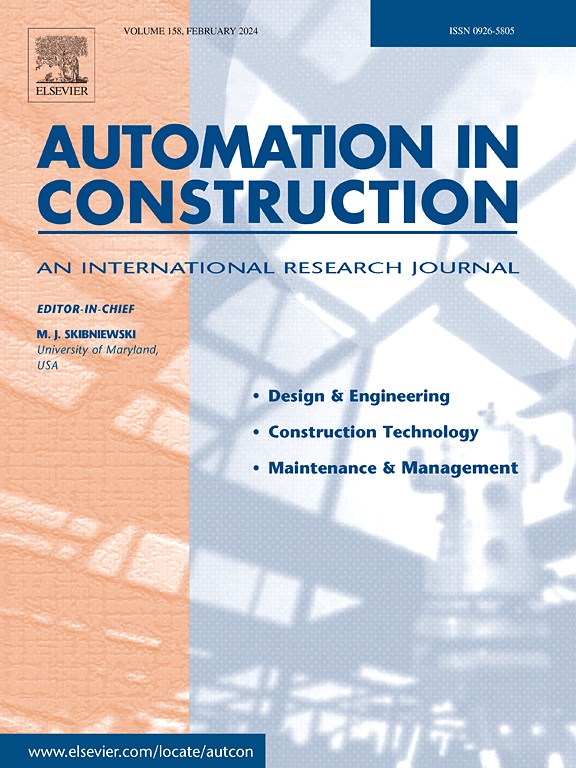基于自我中心摄像机的建筑工地静态危险物体检测方法
IF 11.5
1区 工程技术
Q1 CONSTRUCTION & BUILDING TECHNOLOGY
引用次数: 0
摘要
与美国其他行业相比,建筑工地是一个危险的工作场所,占工人死亡人数的20%以上。这些死亡的主要原因是滑倒、绊倒和跌倒(stf)。因此,识别建筑工地上可能导致STFs的危险物体对于提高建筑安全至关重要。以前使用固定位置相机的研究经常错过对障碍物或隐藏物体的观察。本文提出了一种替代方法,使用带有轻型广角摄像头的安全帽,并利用开放词汇物体检测(OVOD)方法来识别建筑工地上可能导致stf的危险物体。此外,还专门为建筑工地创建并发布了一个以自我为中心的视图数据集,用于基准测试。研究结果表明,建筑工地的静态危险物体分类得分为79.0%,加权得分为f1。该系统具有提高建筑安全的潜力,并为未来的建筑安全研究提供了有价值的数据集。本文章由计算机程序翻译,如有差异,请以英文原文为准。
Egocentric camera-based method for detecting static hazardous objects on construction sites
The construction site is a hazardous workplace, accounting for more than 20 % of worker fatalities compared to other industries in the United States. Predominant causes of these fatalities are slips, trips, and falls (STFs). Therefore, identifying hazardous objects on construction sites that could lead to STFs is crucial for enhancing construction safety. Previous studies using fixed-position cameras often miss observations of obstructed or hidden objects. This paper proposes an alternative approach using safety helmets with lightweight wide-angle cameras and leveraging open-vocabulary object detection (OVOD) methods to identify hazardous objects on construction sites that could lead to STFs. In addition, an egocentric view dataset specifically for construction sites was created and released for benchmarking purposes. Research results indicated a 79.0 % weighted F1-score in classifying static hazardous objects on construction sites. This proposed system has the potential to enhance construction safety and provide a valuable dataset for future construction safety research.
求助全文
通过发布文献求助,成功后即可免费获取论文全文。
去求助
来源期刊

Automation in Construction
工程技术-工程:土木
CiteScore
19.20
自引率
16.50%
发文量
563
审稿时长
8.5 months
期刊介绍:
Automation in Construction is an international journal that focuses on publishing original research papers related to the use of Information Technologies in various aspects of the construction industry. The journal covers topics such as design, engineering, construction technologies, and the maintenance and management of constructed facilities.
The scope of Automation in Construction is extensive and covers all stages of the construction life cycle. This includes initial planning and design, construction of the facility, operation and maintenance, as well as the eventual dismantling and recycling of buildings and engineering structures.
 求助内容:
求助内容: 应助结果提醒方式:
应助结果提醒方式:


